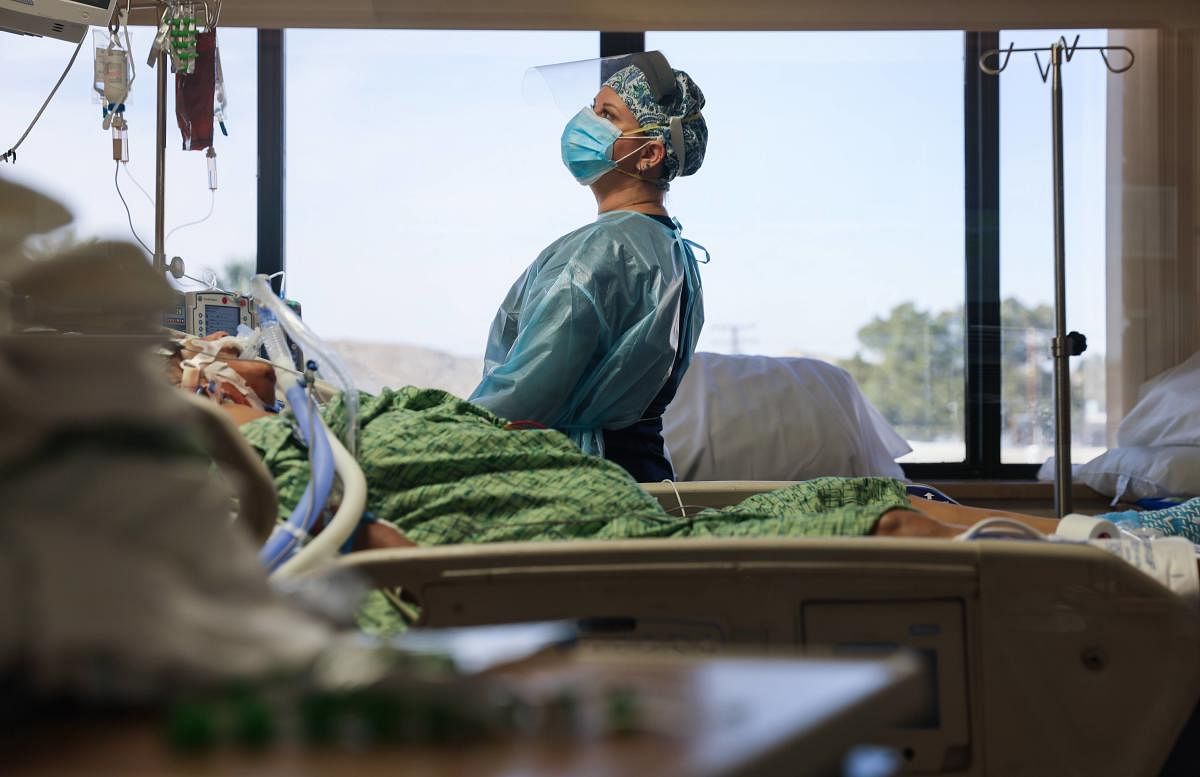
With bubble-enclosed Santas and Zoom-enhanced family gatherings, much of the United States played it safe over Christmas while the coronavirus rampaged across the country.
But a significant number of Americans travelled, and uncounted gatherings took place, as they will over the New Year's holiday.
And that, according to the nation’s top infectious disease expert, Anthony Fauci, could mean new spikes in cases on top of the existing surge.
“We very well might see a post-seasonal — in the sense of Christmas, New Year’s — surge,” Fauci said on CNN’s “State of the Union.”
“We’re really at a very critical point,” he said. “If you put more pressure on the system by what might be a post-seasonal surge because of the travelling and the likely congregating of people for, you know, the good warm purposes of being together for the holidays, it’s very tough for people to not do that.”
On “Fox News Sunday,” Adm. Brett P. Giroir, the administration’s testing coordinator, noted that Thanksgiving travel did not lead to an increase of cases in all places, which suggested that many people heeded recommendations to wear masks and limit the size of gatherings.
“It really depends on what the travellers do when they get where they’re going,” Giroir said. “We know the actual physical act of travelling in airplanes, for example, can be quite safe because of the air purification systems. What we really worry about is the mingling of different bubbles once you get to your destination.”
Still, US case numbers are about as high as they have ever been. Total infections surpassed 19 million Saturday, meaning that at least 1 in 17 people have contracted the virus over the course of the pandemic. And the virus has killed more than 332,000 people — 1 in every 1,000 in the country.
Two of the year’s worst days for deaths have been during the past week. A number of states set death records Dec. 22 or Dec. 23, including Alabama, Wisconsin, Arizona and West Virginia, according to The New York Times’ data.
And hospitalizations are hovering at a pandemic height of about 120,000, according to the COVID Tracking Project.
Against that backdrop, millions of people in the United States have been travelling, though many fewer than usual.
About 3.8 million people passed through Transportation Safety Administration travel checkpoints between Dec. 23 and Dec. 26, compared with 9.5 million on those days last year. Only one-quarter of the number who flew on the day after Christmas last year did so Friday, and Christmas Eve travel was down by one-third from 2019.
And AAA’s forecast that more than 81 million Americans would travel by car for the holiday period, from Dec. 23 to Jan. 3, which would be about one-third fewer than last year.
For now, the US is no longer seeing overall explosive growth, although California’s worsening outbreak has cancelled out progress in other parts of the country. The state has added more than 300,000 cases in the seven-day period ending December 22. And six Southern states have seen sustained case increases in the last week: Tennessee, Alabama, Georgia, South Carolina, Florida and Texas.
Holiday reporting anomalies may obscure any post-Christmas spike until the second week of January. Testing was expected to decrease around Christmas and New Year’s, and many states said they would not report data on certain days.
On Christmas Day, numbers for new infections, 91,922, and deaths, 1,129, were significantly lower than the seven-day averages. But Saturday, new infections jumped past 225,800 new cases, and deaths rose past 1,640 — an expected increase over Friday, as some states reported numbers for two days post-Christmas.